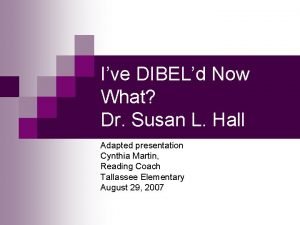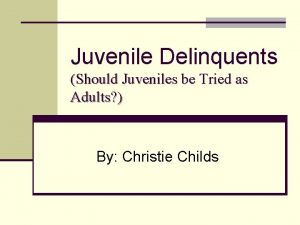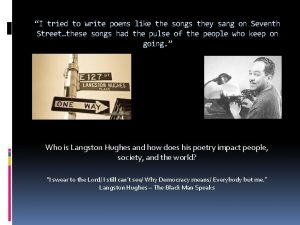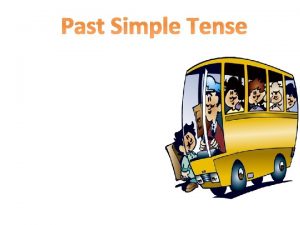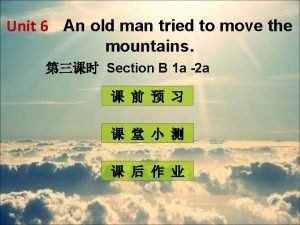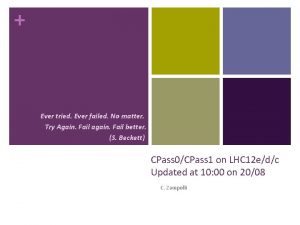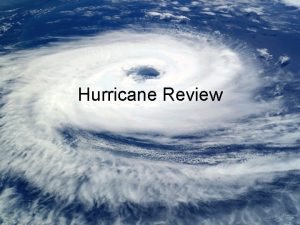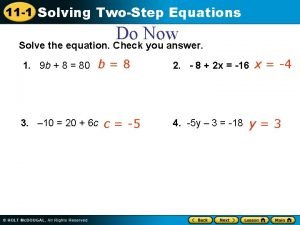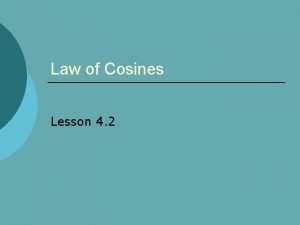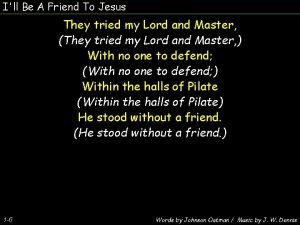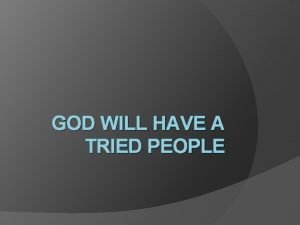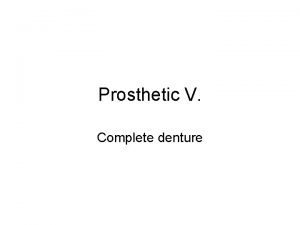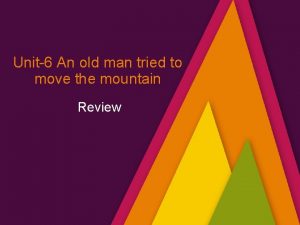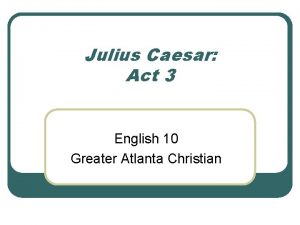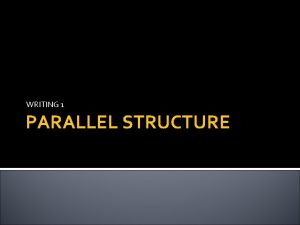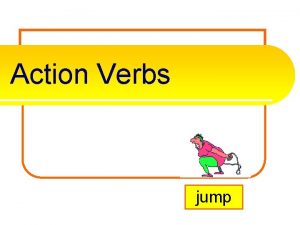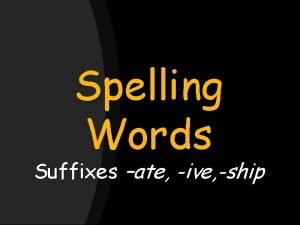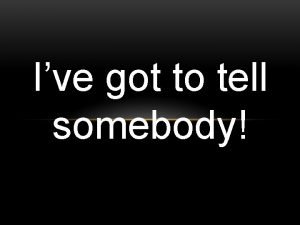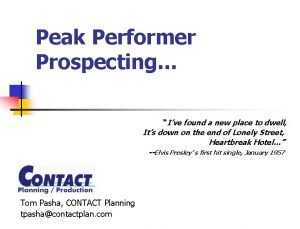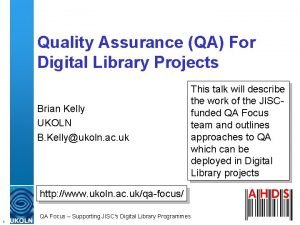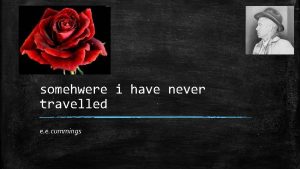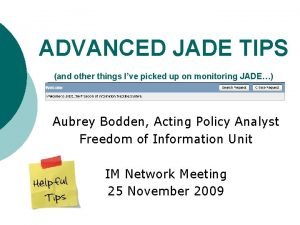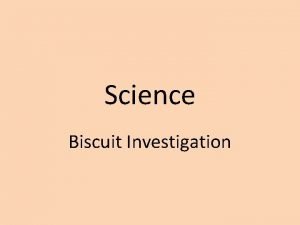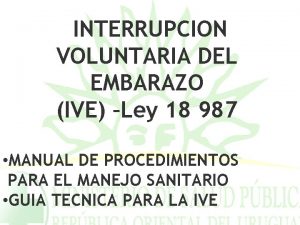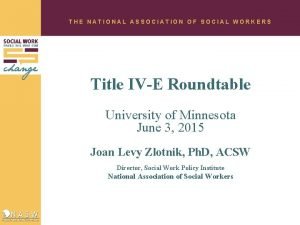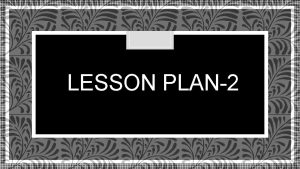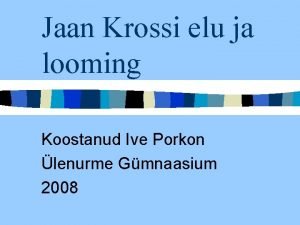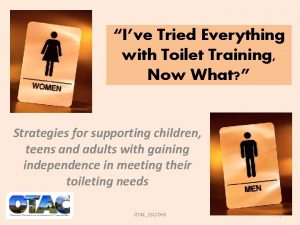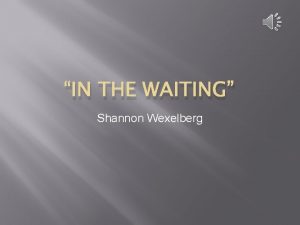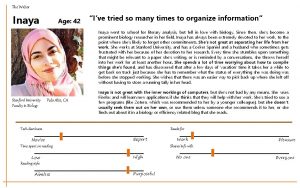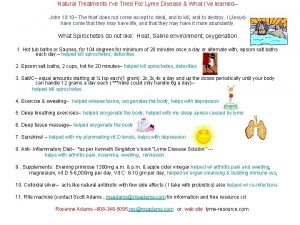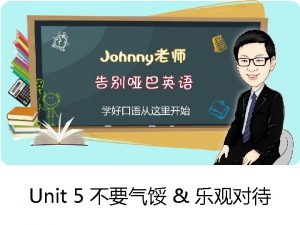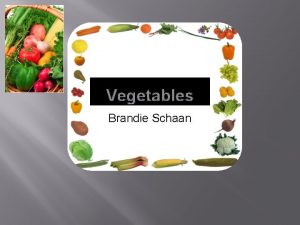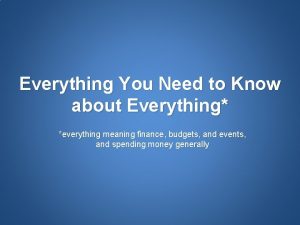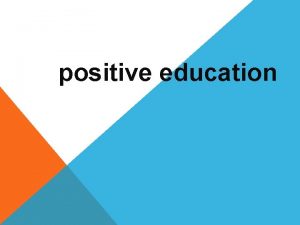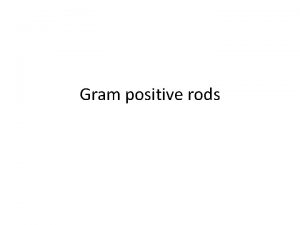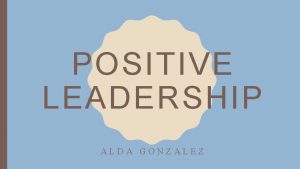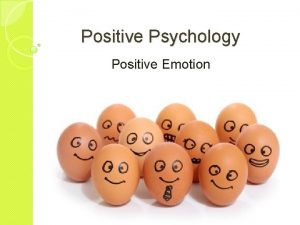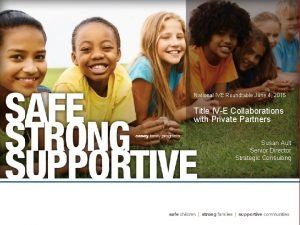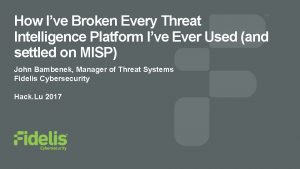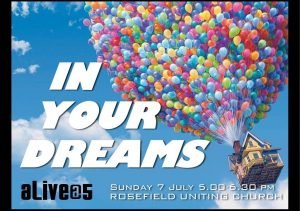Ive Tried Everything Now What Positive Support for



















































- Slides: 51

“I’ve Tried Everything, Now What? ” Positive Support for Challenging Behaviors Parent Training 2012 2013 Sponsored by: Oregon Technical Assistance Corporation: Community Supports and Crisis Project

s n o it r t n I d o c u Resources are gladly welcome! Welcome

Overview � Introduction to materials � Positive behavior supports � Behavior Pathway- tool for understanding behavior � Strategies for supporting: • Prediction, control, outlet, social support Housekeeping: • Breaks/bathroom • Confidentiality • Opportunities to share

Parent Training Online resource http: //www. otac. org/pbs/online-parent-training-series/

Changing the environment, changing our behavior, and teaching skills to help the person achieve a goal Barriers Skills What is Positive Behavior Support?

Skills Barriers

One Page Profile A tool for introducing your child �Provides you with the opportunity to share your knowledge and expertise about your child �Gives your child a voice �Positive introduction �Can grow with your child! Customize

A one page profile includes information about…. . Like and admire… (positive qualities, strengths, and talents of the person) What’s important to… (from the person’s perspective, even if others do not agree) People, hobbies, routines, dislikes etc. How to support…. What people need to know and do to support the person • Things to avoid (known triggers) • Safety information

Activity • Turn to your partner and “introduce” your child or the person that you support • Share information about the person’s: • Skills and interests • What people like and admire about them

What behavior is worth changing? Whatever is causing behavior that: • Impacts health and safety • Decreases quality of life Address now Address later

What we see…. Behavior (observable actions) • Not responding “ignoring” • Constantly moving • Repeating phrases What we do not see…. • Underlying conditions (Presets) • Age • Diagnosis (characteristics specific to your child) • Life experiences • Communication • Personality • Sensory needs • Chronic health issues • Medication (side effects) • Strengths, abilities, interests

• Removes hats from people’s heads and hugs strangers • Screams, cries, drops body to ground • Runs from adults • Writes repetitive phrases • Removes shoes in public • Grabs people by their hands and guides them towards objects • Covers ears and sings when asked ? ’s Case � 8 year old, female Study � Autism diagnosis: • Prefers sameness • Strong desire to finish • 15 20 words expressive verbal communication, high receptive language (within familiar routines) • Heightened sensory responses to noise, textures • Strong visual memory (names, signs, movie titles) • Above grade level in reading, writing � Seasonal allergies � Difficulty sleeping � 2 nd generation Vietnamese � Attends different school than siblings

• Throws objects • Points to objects that he wants • Paces frequently • Doesn’t follow through with tasks • Loses items daily (needs help finding the lost items) • Refuses to sit down for meals (snacks throughout the day) • 16 year old male • Diagnosis: ADHD, Intellectual Disability • Uses gestures to communicate • Lives in foster care • Medication for ADHD: causes drowsiness • Difficulty sleeping at night • Bullied at school Case Study

List 1 2 behaviors above the iceberg and fill out the underlying conditions below • Age • Diagnosis • Life experiences • Communication • Personality • Sensory needs • Chronic health issues • Medication (side effects) • Strengths, abilities, interests Activity

Behavior Pathway Who is my child: What sets my child up: Setting Events Underlying conditions What sets my child off: Trigger What my child does: Behavior What does my child gain or avoid by doing this: Outcome

Setting Events S � Often referred to as “stressors” � They stack up � Can be physiological, environmental, social � Influence behavior Setting Events T R E B S S

Common setting events lity i b a t ic d e r p of k c a L waiting S k c i thirsty d e r i T Environment Pain hungry

Triggers � Occur immediately before the behavior � Can be physiological, environmental, social � Influence behavior Trigger B

Common triggers k s a t t l u c i f f Di “nobody is listening to me!” “No” s s e r t S alarm “Wait” “Later” Pain Transitions

“Even though you don’t see it, doesn’t mean it’s not there…. ” “It seems as though the behavior came out of nowhere” “Remember, it may be internal”

Consider some of these things: • Challenging routines, activities • Words or phrases that upset your child • Non preferred environments, people Activity Using your behavior pathway form, fill out common setting events and triggers for your child or the person you support!

Outcomes • Maintain behavior • Meet a need for the person Setting Events B Outcomes

Common outcomes Gain Something pleasant is added to the person’s environment • Attention *type: • Physical contact • Emotional • Person • Object/activity Avoid Something unpleasant is removed from the person’s environment • Chaos is decreased • Escape environment • Threat is removed • Task is avoided

Behavior Pathway Example: Shawn hungry, tired, playing outside with water Asked to come inside Screams, drops body to ground Avoids transition

Behavior Pathway: Example Setting Events Underlying factors • Requested to end task or transition • Other’s talking loudly • People wearing hats • Doors open • Tired, runny nose • Out of favorite snack • Sibling took her movie • Fold in sock • Engage in preferred activity Trigger Behavior Outcome • Being told 1. Screams, 1. Gains “no, ” “wait” information cries and • Computer (visually), drops stops working avoids • Stomach ache body to transition, the --------communication 2. Avoids ground 1. Asked to sensory 2. Remove transition distraction s shoes in (crease in sock away from preferred is removed) public activity 3. Gains 3. Remove 2. Crease in “sameness”s hats sock hat is removed 3. Sees hat on head

Behavior Pathway: Example Setting Events • 16 year old male • Diagnosis: ADHD, Intellectual Disability • Uses gestures to communicate • Lives in foster care • Medication for ADHD • Difficulty sleeping • Bullied • After school • Medication causes him to be sleepy during the day • Bullied at school earlier in day • Thirsty • Holiday seasonmisses bio family • Just earned back computer privileges from previous week • Worried about showing daily school report to foster parent Trigger Behavior • Told he 1. Throws couldn’t play computer on the chair computer because he threw his chair at school Outcome 1. Told he lost computer privileges again for another week 2. Gains outlet for frustration and ability to communicate that he is upset

Activity Complete the behavior pathway

Behavior Pathway: We can’t change a child’s behavior, but we can influence it… Who is my child: Underlying conditions What sets my child up: Setting Events What sets my child off: Trigger Add proactive supports here: irrelevant • Control in their life • Meaningful relationship • Community connections • Supported caregivers • Teaching skills (replacement behavior) • Reducing barriers • Engineer the environment What my child does: Behavior • Meets the same need as the challenging behavior: inefficient Replacement Behavior What does my child gain or avoid by doing this: Outcome Change the outcome to make the behavior ineffective

Reinforce the new skill Bored Kalin Wants to play Mom and dad are busy Parent walks by Bites self Parent quickly responds by showing Kalin a toy and begins to play with him Kalin bites himself to get his parents to play with him. Kalin has been taught (proactive strategy) to bring them a toy when he wants to play (replacement behavior). Kalin’s parents reinforce this new skill by immediately stopping what they are doing to play with Kalin every time he brings a toy to them (change the outcome).

Behavior Pathway: Case study We can’t change a child’s behavior, but we can influence it… Who is my child: Underlying conditions What sets my child up: Setting Events What sets my child off: Trigger Add proactive supports here (irrelevant): • Teaching opportunity to practice the replacement behavior • Remove hats before entering room • Use social stories to help her understand “why” people wear hats What my child does: Behavior • Says “hat off please” (using visual cue) inefficient Replacement Behavior What does my child gain or avoid by doing this: Outcome Immediately remove hat • Reinforce replacement behavior ineffective

Behavior Pathway: Case study We can’t change a child’s behavior, but we can influence it… Who is my child: Underlying conditions What sets my child up: Setting Events What sets my child off: Trigger Add proactive supports here (irrelevant): • Teaching opportunity to practice the replacement behavior • Consider keeping school/home separate (what happened at school does not impact home environment) • Decrease the time allotted for the preferred activity vs. full removal of activity (must be determined ahead of time) What my child does: Behavior • Teach alternative ways to cope with frustration/ communicate Replacement Behavior What does my child gain or avoid by doing this: Outcome “I see you are frustrated. Remember, doing ____ tells me this. ” • Reinforce replacement behavior

Proactive Support Planning �Predictability �Control �Outlet �Social support We all need support it can just look a little different!

Predictability • Create “Islands of predictability” • Answer the “all important questions” • Develop routines

Islands of predictability • Increase supports during challenging activities and transitions • Centralize information: • Wall calendar • Transition area

Where am I going? What’s next? All Important Questions How much am I doing? Who’s going to be with me? How will I know I am finished? What am I doing?

Answering the all important questions for different learners �Level Photo of representation…… Line drawing Object Words Banana

Where am I going? “First we are going to read, then we will go to the park”

What am I doing? 1. 2. Drive Bath 3. Brush teeth Get dressed

How much am I doing? • Eggs • Milk • Bananas • Coffee

How will I know I am finished? Finished • Eggs • Milk • Bananas • Coffee

Brea k fast What’s next? • Eggs • Milk • Bananas • Coffee • Go to movies!


Control • Build trust • Provide options • Teach skills

Trust, Options, Skills Communication Supports • Identify and avoid power struggles • Take time to engage in preferred activities together- play! • Adapt your communication • Must be honored and possible • Avoid offering too many choices, as this can be stressful for some people Basic needs Likes/dislikes Ask for help Space/break Yes/No

al tion Emo Ph ys ic al Outlets

e s i c r e x E h g u a L Coping strategies • Identify early warning signs • Determine safe alternatives • Support sensory needs • Develop stress management plan Use tools to help measure stress and identify coping methods

Audience Teaching Practice with your child Feelings Take small steps Model positive outlets • Describe what you see • Encourage child to express emotions • Avoid terms such as “inappropriate” • Validate their emotion • Attach a physical outlet to the emotion

Social Support • Building relationships • Parent to parent networks • Resources: share!

Behavior Pathway: Activity Complete this form Who is my child: Underlying conditions What sets my child up: Setting Events What sets my child off: Trigger Add proactive supports here: irrelevant • Control in their life • Meaningful relationship • Community connections • Supported caregivers • Teaching skills (replacement behavior) • Reducing barriers • Engineer the environment What my child does: Behavior • Meets the same need as the challenging behavior: inefficient Replacement Behavior What does my child gain or avoid by doing this: Outcome Change the outcome to make the behavior ineffective

Contact Information: Main office: (503) 364 9943 Fax: (503) 364 1939 3886 Bev erly Avenue NE, Build ing I, Suite 21 Salem, Ore gon 97305 1373 www. otac. org

Resources �Association for Positive Behavior Support http: //www. apbs. org/ �Understanding the Nature of Autism Janice Janzen, M. S. �E. Schopler, 1994 �Asai & Associates, Inc. 2. 28. 06 �TEACCH, http: //teacch. com/ �www. csrpcp. net �http: //www. helensandersonassociates. co. u k/media/38450/oppinschlguide. pdf
 Lately i been losing sleep
Lately i been losing sleep Dibeld
Dibeld Now i see it now you don't
Now i see it now you don't Why shouldn't juveniles be tried as adults
Why shouldn't juveniles be tried as adults Pune, india, has tried to increase its rainfall by
Pune, india, has tried to increase its rainfall by I tried poems
I tried poems Was caused by breathing impure air was once a common belief
Was caused by breathing impure air was once a common belief Present simple ed
Present simple ed The old man was _____.
The old man was _____. Ever tried ever failed no matter
Ever tried ever failed no matter Streamlines on a weather map depict
Streamlines on a weather map depict Jamie tried to solve an equation step by step.
Jamie tried to solve an equation step by step. Name calling examples
Name calling examples Gabe tried to use the law of cosines
Gabe tried to use the law of cosines I'll be a friend to jesus
I'll be a friend to jesus Tried people
Tried people Rubber impression
Rubber impression The old man tried to stop
The old man tried to stop Who tried to warn caesar
Who tried to warn caesar Monica brewed espresso steamed milk
Monica brewed espresso steamed milk Mr tongue twister tried to
Mr tongue twister tried to Helping verb
Helping verb Hate 3. hali
Hate 3. hali Elephant concrete poem
Elephant concrete poem The old man tried to stop
The old man tried to stop I've heard a thousand stories
I've heard a thousand stories A thousand times ive failed
A thousand times ive failed Ee cummings somewhere i have never travelled
Ee cummings somewhere i have never travelled Lan4107 ea
Lan4107 ea Able suffix example
Able suffix example Ive spelling
Ive spelling Ive overcame
Ive overcame Peak ive
Peak ive Qa library
Qa library Ive been rolling
Ive been rolling Ee cummings somewhere i have never travelled
Ee cummings somewhere i have never travelled Jade ive
Jade ive Suffix ive examples
Suffix ive examples Lockdown ive
Lockdown ive Que es el ive
Que es el ive I found my friend lds
I found my friend lds Ive social work
Ive social work Ive postions
Ive postions Senjanin tadija pesma
Senjanin tadija pesma Jaan krossi luulekogu
Jaan krossi luulekogu Pea suu tõmba uttu kokkuvõte
Pea suu tõmba uttu kokkuvõte Unreserved love
Unreserved love The furthest distances i've travelled
The furthest distances i've travelled Adjectif en if ive
Adjectif en if ive Ive been given
Ive been given There's nothing worth more that will ever come close
There's nothing worth more that will ever come close Great gatsby chapter 7
Great gatsby chapter 7

